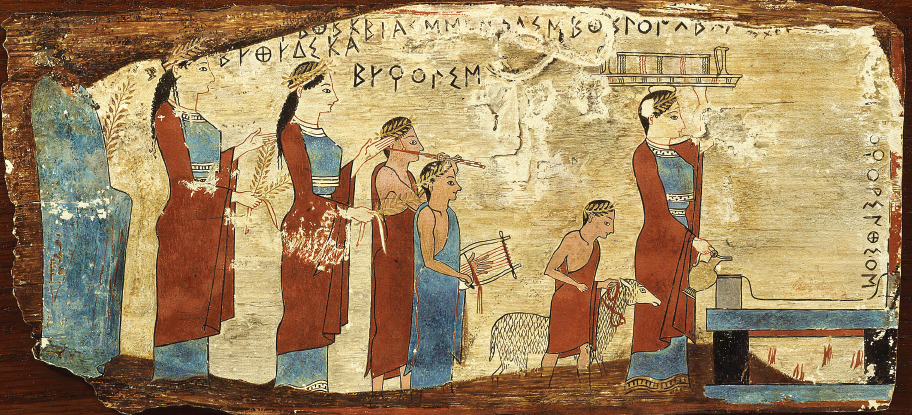
Religious Procession in Hellenic Greece This painted wooden slab from about 540 B.C.E., found in a cave near Corinth, shows adults and children about to sacrifice a sheep to the deities worshipped in this area. The participants are dressed in their finest clothes and crowned with garlands. Music adds to the festivities. Rituals such as this were a common part of religious life throughout Greece. The boys are shown with tanned skin and women with white, reflecting the ideal that men’s lives took place largely outside in the sun-